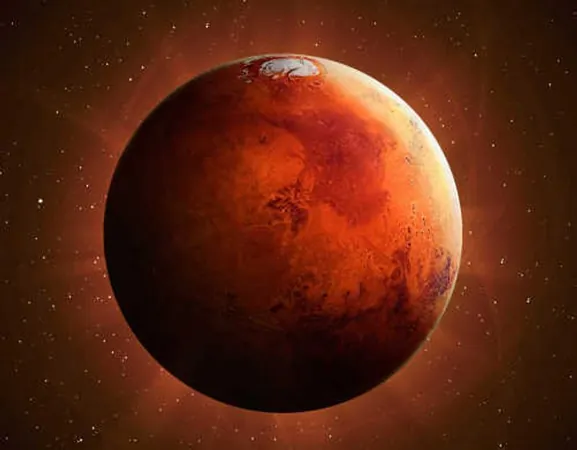
Discovering Mars' Potential for Habitability Through Ancient Zircon Grain!
2024-11-23
Author: Emily
Groundbreaking Revelation
In a groundbreaking revelation, Australian scientists have unearthed the oldest direct evidence of hydrothermal activity on Mars, unearthing clues that suggest the Red Planet may have once been capable of supporting life.
Study Details
In a meticulous study published recently, a research team from Curtin University in Western Australia analyzed a remarkable 4.45 billion-year-old zircon grain sourced from the renowned Martian meteorite NWA7034, famously dubbed 'Black Beauty.' This extraordinary meteorite, discovered in the Sahara Desert back in 2011, has been instrumental in advancing our understanding of Mars’ geological history.
Zircon's Significance
The focus of the research was the mineral zircon, which holds geochemical signatures indicating exposure to water-rich fluids. This discovery is crucial as it implies that liquid water was present during the early magmatic activities on Mars, suggesting a potentially habitable environment quite early in the planet's history.
Expert Insights
Aaron Cavosie, one of the study's co-authors from Curtin's School of Earth and Planetary Sciences, emphasized the significance of these findings, stating, 'We utilized nano-scale geochemistry techniques to uncover elemental traces of hot water on Mars dating back 4.45 billion years.' This breakthrough not only enhances our understanding of Mars' past but also points towards the existence of hydrothermal systems, which are believed to have played a fundamental role in the emergence of life on Earth.
Implications of the Findings
Even in the face of significant asteroid impacts that altered the Martian surface, the study indicates that water likely persisted on the planet during the early Pre-Noachian period, which occurred prior to about 4.1 billion years ago. This opens up exciting new paths of research into Mars' ancient environments.
Collaborative Efforts
The collaborative effort also included expertise from the University of Adelaide, under the leadership of Jack Gillespie, who is currently at the University of Lausanne in Switzerland, further strengthening the international pursuit of Martian research.
Future Research Directions
As tantalizing as these findings are, they raise even more questions about the possibility of life beyond Earth. Could Mars really have been home to ancient life forms? With each discovery, we inch closer to uncovering the secrets of our neighboring planet. Stay tuned as scientists continue to dive deeper into Mars’ enigmatic past, looking for signs of life, both past and perhaps future!









 Brasil (PT)
Brasil (PT)
 Canada (EN)
Canada (EN)
 Chile (ES)
Chile (ES)
 España (ES)
España (ES)
 France (FR)
France (FR)
 Hong Kong (EN)
Hong Kong (EN)
 Italia (IT)
Italia (IT)
 日本 (JA)
日本 (JA)
 Magyarország (HU)
Magyarország (HU)
 Norge (NO)
Norge (NO)
 Polska (PL)
Polska (PL)
 Schweiz (DE)
Schweiz (DE)
 Singapore (EN)
Singapore (EN)
 Sverige (SV)
Sverige (SV)
 Suomi (FI)
Suomi (FI)
 Türkiye (TR)
Türkiye (TR)